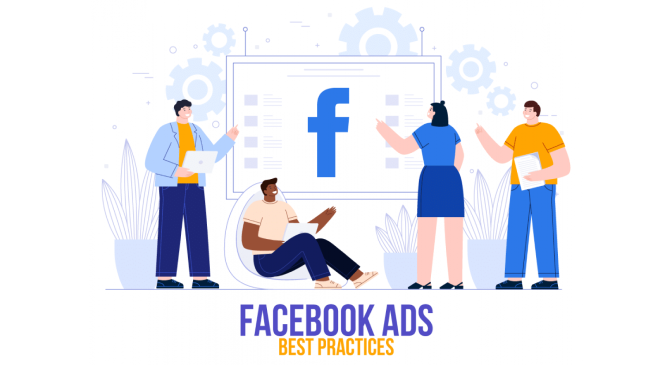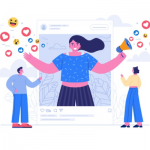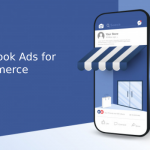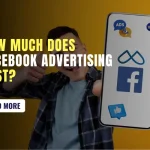Top 10 Facebook Advertising Strategies for Success in 2024
Amidst the coronavirus pandemic, a lot of businesses have already doomed, many are on the verge, and countless are severely affected. Thus, the need of the hour for all drowning businesses is to rise again and re-establish their brand in the market with a stronger will and presence than ever. While there are several ways, these days business are working new facebook advertising strategies to reach their customers and increase brand awareness.
Apart from this, many businesses are also using Instagram Shopping as a powerful tool to expand their reach and turn their Instagram followers into potential and real customers. We have also shared Why and How to Use Instagram Shopping to Boost Your Online Business. There you will learn how to set up an Instagram Shop, promote your catalog, and analyze your progress. If you are too interested in learning all that, take your time and read that post.
Today, in this post, you will learn different Facebook ad strategies that can help your business revive again in 2024 and the upcoming years as well.
Facebook Advertising Strategies to Boost Your Business
Here is the list of Facebook advertising tips and strategies that we will be explaining in this blog post:
- Optimize Your Facebook Advertising Strategy for Both Desktop and Mobile
- Understand and Identify Your Target Audience
- Use Lookalike Audience Facebook Feature
- Conduct Competitive Analysis
- Assess Recent Purchasing Behavior of Facebook Users
- Run Relevant and All-Time Facebook Ads (and Test Everything)
- Choose the Right Objective for Your Facebook Ads
- Repurpose Old Facebook Ads and Determine Frequency Specifications
- Target Warm Audience to Maximize Conversions
- Life-Events Targeting
- Geo-Targeting
- Interest Targeting Along With Remarketing
- Micro-Retargeting For Reminding
- Test and Track Ads Performance and Optimize Them
Before explaining these strategies right away, let me remind you one thing: each business is unique and therefore, it is not necessary that all of the strategies will work excellently for your business. Some would and some won’t. So, don’t be afraid to try them, test, and find out what you can consider the Facebook ads best practices for your business.
1. Optimize Your Facebook Ad Strategy for Both Desktop and Mobile
Nowadays, most people use more than one device to work, be entertained, and hang out with friends online. It often happens that the purchasing journey of a customer begins at their mobile when they see an attractive and relevant ad while spending time on social media and ends when they are free at their work, getting bored, and suddenly something clicks in their mind to make a purchase; maybe a message of credited salary. The vice-versa could also be true. Every person has different preferences, behavior, and shopping habits. You cannot fit them into one rule.
According to a 2019 report by eMarketer, US consumers would be spending more time on their smartphones than television. Here is a graphical presentation of what it predicted:
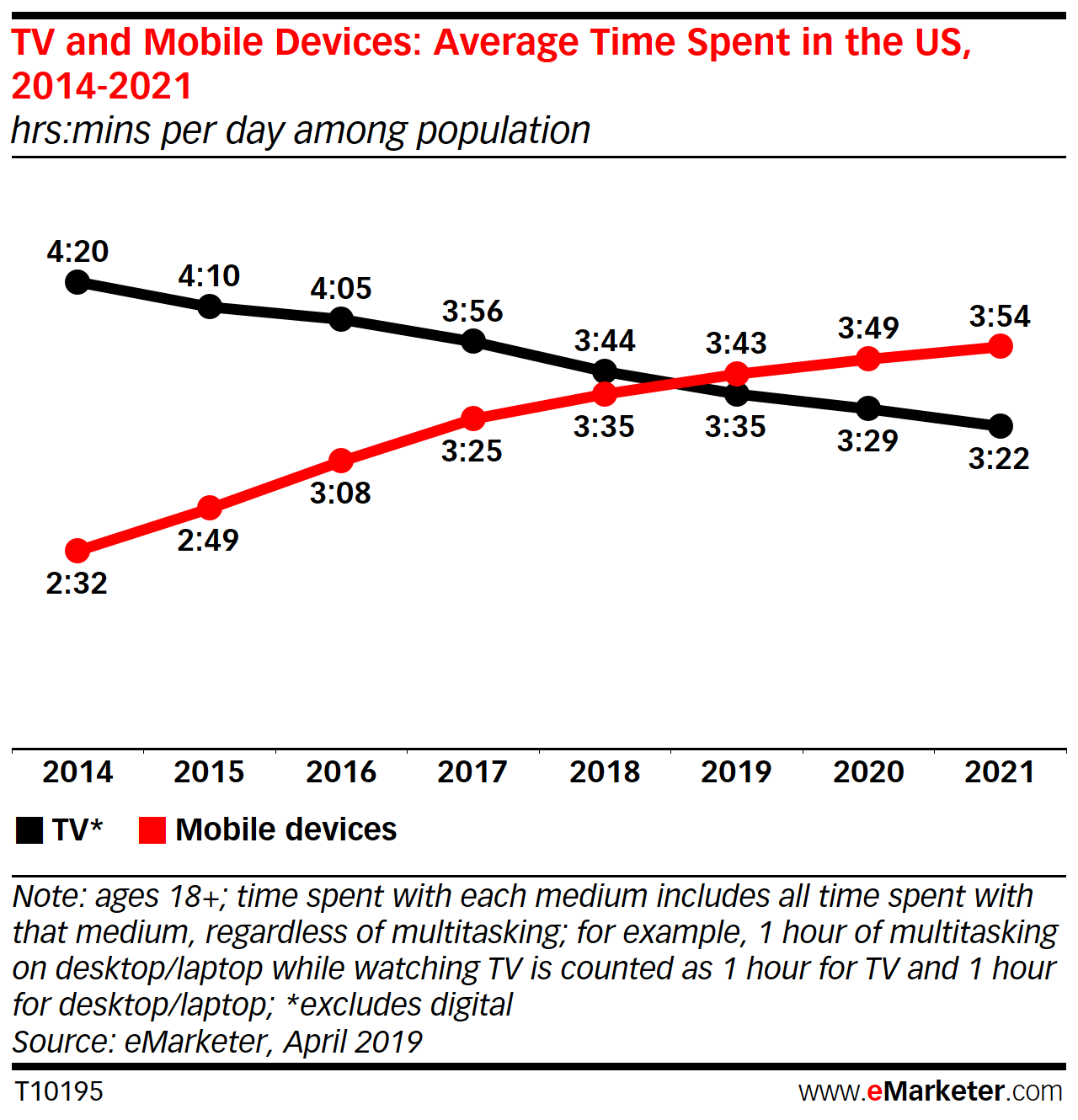
Image Source: eMarketer
As 5G will become more prevalent among mobile users in the future, the number is likely to increase only.
Though the mobile share of organic search engine visits has increased significantly from 27% in 2013 to 56% (in the US alone), it doesn’t mean desktop usage will go obsolete. Surprisingly, there is only a slight drop in time spent (from 144 min. to 128 minutes) on the desktop between 2013 and 2019, according to an article shared by BroadbandSearch.Net.
That’s why you need to optimize your Facebook ads for mobile as well as desktop devices.
2. Understand and Identify Your Target Audience
To raise brand awareness among potential customers, first, you should know how to categorize your customers based on how much they are aware of your brand and business. Eugene Schwartz, a legendary Copywriter, discussed the Levels of Customer Awareness in his book “Breakthrough Advertising”.
According to Schwartz, the prospects can be categorized in one of the following stages:
- Completely-Unaware – They are neither aware of your brand nor your products and they are not looking for any solutions as they don’t know if they have a problem yet.
- Problem-Aware – Your prospects only know that they have a problem but don’t know if there is a solution.
- Solution-Aware – Your prospects know what they want but are not aware of the fact that your product/service can solve their problem.
- Product-Aware – Your prospects know what your business offer but are not sure if it is right for them
- The Most Aware – Your prospects already know your products and services and, now they only need to know what deals you are offering.
Knowing and categorizing your Facebook audience into these levels will greatly help in developing and targeting relevant ads; otherwise, there is a possibility that you might be frustrating your existing customers by sending your first-user code or discount coupon again and again.
This way, you can also better optimize your advertisements and might also earn more or save on Facebook paid advertising strategy because you will be pinpointing only specific people who are most likely to buy.
However, if you are new to Facebook, there might be a limited number of people you can reach. In this case, Google Analytics can help you determine what type of traffic you are driving to your website. You will be able to see your audience based on different parameters, such as interests, geographic locations, devices, and more. The information that you use to create Google Ads can also be used to create your Facebook ads or ads on any other platform.
Here are a few tips on how to segment and target your business audience:
- If you are a small local business and not serving far-off locations, you should target an audience in your own and nearby cities.
- When your business delivers to customers of all ages or a broad age range, it’s wise to segment your ads accordingly rather than creating one ad for all.
- You should target customers based on what they like, share, and show more interest in rather than offering them some random deals.
- You can also use additional details like relationship status, educational background, and work area to target specific social media personas that resemble your real-life customers.
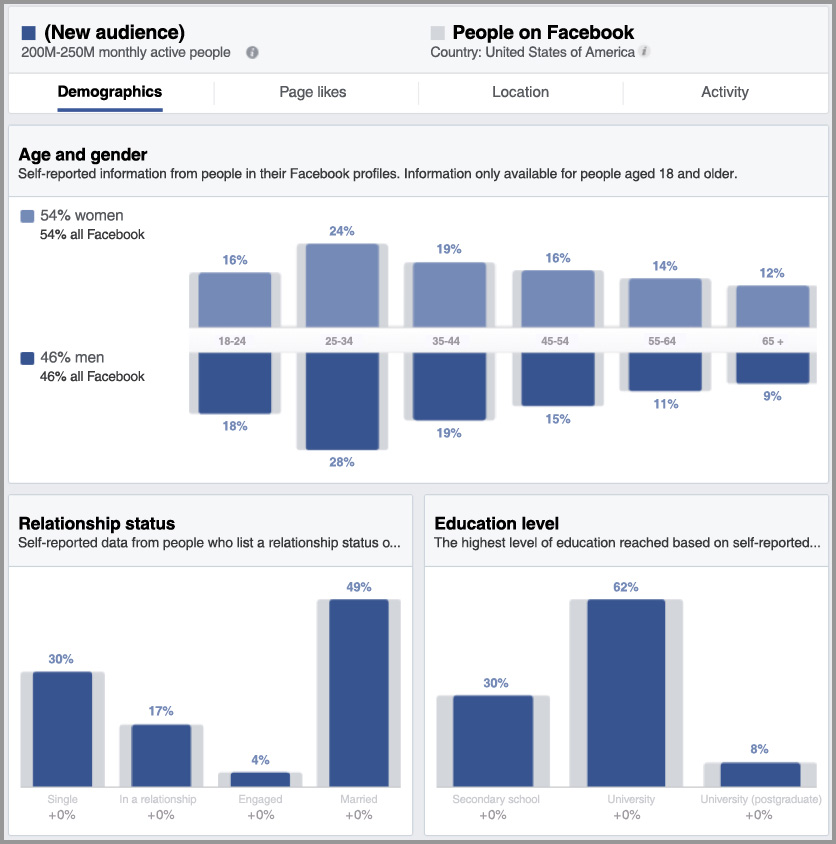
Image Source: Facebook
3. Use Lookalike Audience Facebook Feature
When you create Facebook ads, you will find a key feature “Lookalike Audience” very helpful. This feature empowers you to reach new potential customers who are more likely to be interested in your business offerings as they are similar to your real-life customers. How could you be sure that new people being targeted are similar to your existing customers? Don’t worry about it because Facebook takes care of it. When you provide information while creating the Lookalike Audience, Facebook will help you find the top 1 percent (or as selected) of users with similar traits.
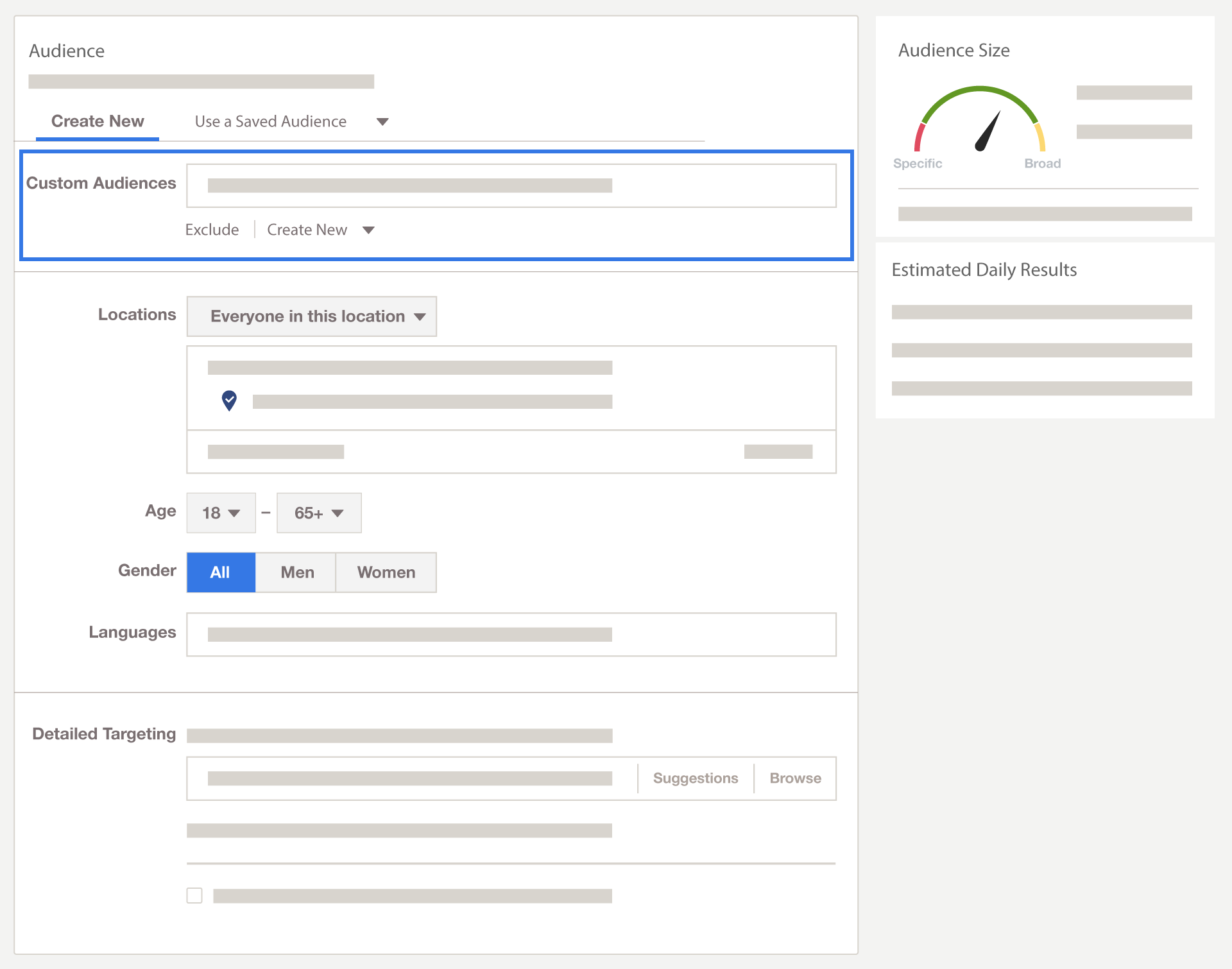
In short, with the help of Lookalike Audience, you can target Facebook users similar to your loyal customers or who have already engaged with your ad campaigns.
To learn more about how to create a Lookalike Audience, visit About Lookalike Audiences at Facebook Business Help Center.
4. Conduct Competitive Analysis
To understand what types of ads your audience will better respond to, you need to conduct competitive analysis. This will help you understand the preferences of the customers that go to your competitors. Use available information to customize your ads, highlight the best features of your products/services, and provide reasons why your products/services should be chosen over the ones offered by your competitors.
While offering deals, first analyze what kinds of deals your competitors are offering and how your deals are different and better than theirs. Then, create Facebook ads with highlighted features and deals. Know what to bold or capitalize to highlight salient features and deals and learn how to create a message that attracts the attention of people out there on Facebook. Spaces and proper indentation also plays a great role in increasing the readability of your message. So, use them wisely.
5. Assess Recent Purchasing Behavior of Facebook Users
Before you start creating a Facebook Ads Strategy and beyond, you need to be better prepared so that you don’t waste your money on non-relevant ads. A lot of businesses around the world are already shattered; therefore, you need to spend your money wisely.
Facebook knows about its users a lot more than you do. How? In 2013, Facebook partnered with data brokers, such as Acxiom and Datalogix – the companies that have access to billions and trillions of data transactions. After the partnership, Facebook suddenly becomes the secret bearer of its users. Whether you love Mafia Wars or Words with Friends, like reading thriller novels, or getting married soon, Facebook probably knows it all.
All this information is a gold mine for advertisers and helps them go beyond their own CRM database. Facebook allows advertisers to categorize user profiles based on their behaviors and specify subcategories and within each broad subcategory, you can go deeper into the type of behaviors, for instance, selecting Buyer Profiles to target fashionistas, foodies, and DIYers.
6. Run Relevant and All-Time Facebook Ads (and Test Everything)
According to a 2015 study, Facebook is said to influence more than half of consumers (52%) when making online as well as offline purchases and the number is only rising. On the contrary, you might have read the heading at many places that many small businesses fail with Facebook ads.
However, when you will look at the 2018 B2C Research, 96% of content B2C marketers use social media posts for content marketing purposes and 97% of marketers use Facebook as a marketing platform.
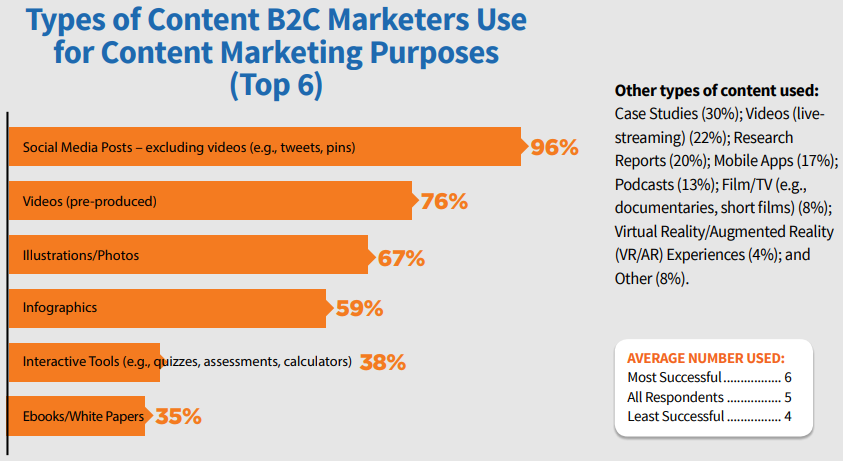
So, this means that Facebook ads really work for businesses; otherwise not this many marketers will be using Facebook as a content marketing platform. The only thing is that you should be running more relevant and compelling Facebook ads that resonate with your customers.
To help you make your ads more appealing to your customers and engage your audience in diverse ways, Facebook gives you the freedom to use a variety of ads.
To learn different types or formats of Facebook ads with examples, click here: 2020 Facebook Ads Guide: How to Advertise on Facebook [Budget, Formats, and Strategies]
Based on your business nature and goals, you can decide to run ads weekly, bi-weekly, or monthly. There are different types of campaigns that you can incorporate with your Facebook Advertising Strategy.
- Awareness Campaign – It targets people who are most likely to interact and engage with your brand. It is designed to share your brand story with that audience.
- Lead Generation Campaign – It is the next step after generating awareness. It includes getting their information like email addresses by offering value, such as free samples, e-books, and webinars to your audience.
- Conversion Campaign – It is meant for converting the leads you collected through lead generation campaigns into sales. This is the campaign where you offer super value deals to make your offer look better than that of your competitors and stimulate the target audience to make a purchase.
Use Split Testing or A/B Testing as the fundamental part of your Facebook ad strategy right from the start. Try multiple ad samples to test images and ad copy. Besides, prefer split testing for different audiences, places, and delivery optimizations. This will help you assess what’s working for you and what is not.
7. Choose the Right Objective for Your Facebook Ads
Choosing the right objective for your ads matters a lot, especially on Facebook because it has real impact and consequences. Facebook offers different objectives to choose from. When you are into Facebook paid advertising strategy, it is better to choose your objective wisely because Facebook automatically optimizes your campaigns based on what objective you have chosen.
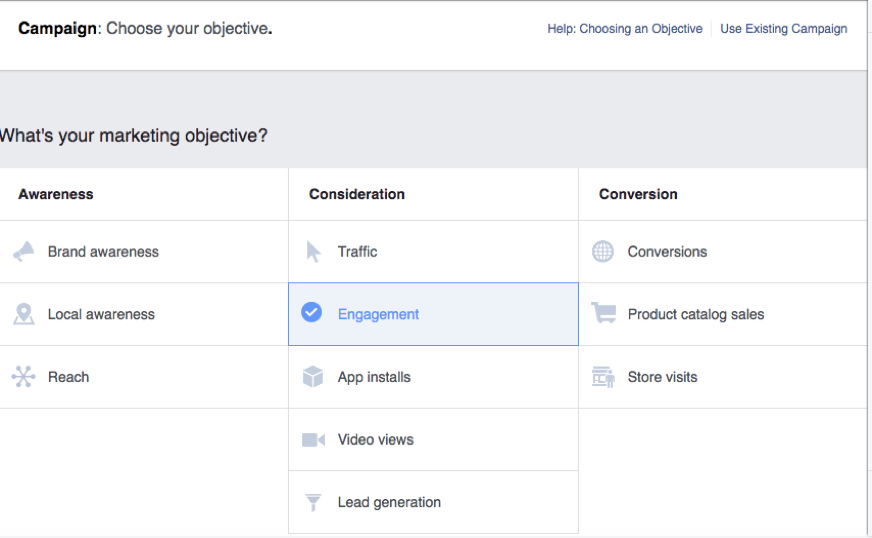
For instance, if you are running video ads, Facebook will show your video ads to users who have been more likely to engage with videos. On the other hand, if you target lead generation, Facebook will expose your ad to the users who have historically submitted forms.
8. Repurpose Old Facebook Ads and Determine Frequency Specifications
We understand that creating new Facebook ads can be very time-consuming for you. If you are a beginner, you would most probably be looking for easy ways to run ad campaigns. Here is a better approach for you – repurpose your existing ads.
Try to make them more engaging this time and find the right balance of frequency. If you are displaying the same ad over and over again to the same customer, it could be quite frustrating. The ideal way is to show your ad not more than five times to the same consumer; however, you are free to do the experiment with frequency.
By repeating the same ad for a long time in front of the same customers, you would be experiencing a higher cost-per-click (CPC) and lower click-through-rate (CTR). Besides, a lot of repetition also loses the effectiveness of an advertisement.
Thus, when you create a Facebook ad, specify the frequency right away before setting it to action.
9. Target Warm Audience to Maximize Conversions
Finding your brand is not enough for people to make a purchase. People are more likely to buy from those businesses they can trust even if they are providing not-so-appealing-products as available with an unknown business. Thus, you need to do something so that they are aware of that they can trust you and know what you do and how your product or service can solve their problems or enhance their lifestyle.
However, you are not always ready to wait that long it takes time to build brand awareness. Thus, to maximize your conversions, you should target “warm audience” – people who are already familiar with your brand and know what it does but haven’t tried yet. To target them, create Custom Audiences based on Engagement; meaning people who have liked your posts on Facebook or commented on your Instagram video.
To help you with targeting your audience and get better results, we are going to discuss different types of targeting that work well for most marketers.
Life-Events Targeting
Many businesses cater to people who are experiencing certain life events or major changes. Some of the examples are wedding planners, medicine suppliers, packers and movers, and funeral homes. Since people tend to post all these things on Facebook often, Facebook can help advertisers reach these people. Plus, Facebook also provides almost every life event targeting option. Don’t let this opportunity waste.
Geo-Targeting
With geo-targeting, marketers have become proactive and precise in targeting people based on their geographical locations. This could be one of the most effective Facebook ad strategies in 2024 for your business as it allows you to display relevant ads to prospects depending on where they live or are located. Additionally, you can also choose how wide of a radius (of a location) you want to target. You can further refine your targeting by specifying age, gender, and education as well.
Interest Targeting Along With Remarketing
Though remarketing strategy is effective in itself, it delivers the best results when combined with interest targeting. To provide a better experience to your customers and visitors, simply bringing them to your website is not sufficient. You need to learn more about them and auxiliary interest targeting is what can help you at this stage. Facebook allows you to target people based on what they do or like to do.
Moreover, you can also target your competitors. For instance, if you are in some non-alcoholic beverage business, you can target Pepsi and Cola customers as well. You never know how many people might attract to your business. If it isn’t working for you, you are always free to drop the idea later. But, trying this strategy can do wonder for you.
Micro-Retargeting For Reminding
Facebook gives you the liberty to target people who have been to your website, mailing list, shopping cart, or engaged with your content. It is much more effective than targeting random people. Use micro-retargeting to convert your visitor into a customer or referrer. With micro-retargeting, you can get more detailed these days based on various factors. Some of them are:
- Whether a person has watched your video on YouTube until the end or not
- How far a person scrolled down on your sales pages
- If they have downloaded your provided guide
- How many articles they have read on your site
- If they have watched a testimonial video, then didn’t call
Retargeting prospects on such factors is much more result-driven than targeting anyone you see on Facebook.
10. Test and Track Ads Performance and Optimize Them
Undeniably, the performance of an ad drops over time. It sounds devastating but you can prevent this. To ensure that your ads keep performing well, test different formats, and optimize them so that their performance doesn’t degrade with time. Do it by keeping CPC at a level that your ads are more affordable and effective. To track the ad performance, check out your Ads Reporting in the Ads Manager.
When you see your ads performance declining, adjust your ad placement. You can place them anywhere on Facebook, such as newsfeeds, in-stream videos, instant articles, Messenger, or Audience Network.
To Conclude
All these Facebook advertisement strategies have been popular among business marketers and will continue to perform well in 2024 and beyond. In the beginning, you should open your advertisement efforts to more experiments. After some time, find out which strategies are delivering better performance for your business and then double your efforts to reap more benefits from those strategies. Thousands and millions of businesses are already benefiting from Facebook ads. So can you. You just need to do it the right way. In the end, I would like to remind you that:
Survivors are the ones who keep fighting. So, to remain the least affected from any crisis, keep your guard up instead of dropping it down.
Latest posts by Vijaya Tyagi (see all)
Important Tips & Tactics to Boost Your Website Reputation!! - October 16, 2025
14 Years, Thousands of Campaigns, Countless Stories – And We’re Just Getting Started - September 29, 2025


